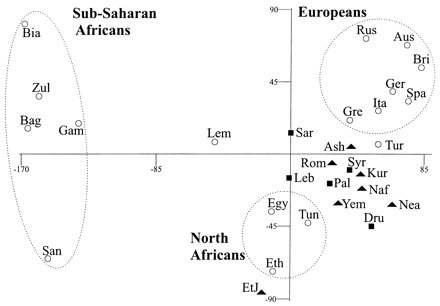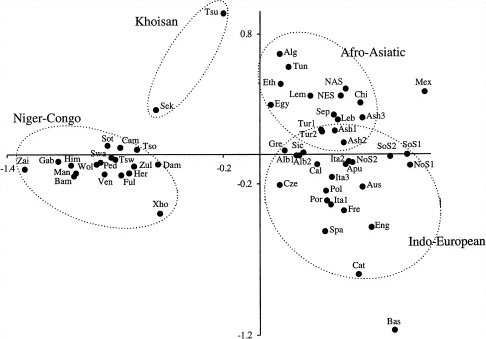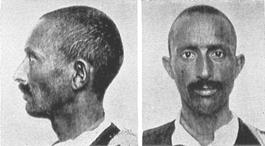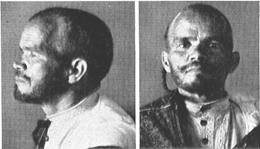NORTH AFRICANS
The cultures of Northern and Northeastern Africa are frequently attributed to blacks of sub-Saharan African origin. However, this is done more for political reasons than to reflect historical or scientific reality, as the evidence from various fields indicates a predominantly Caucasoid origin for North Africans, with gene flow from Negroids being small and occurring comparatively recently.
Genetics
Caucasoid mtDNA (maternal) sequences, labeled L3E and U6, were detected at frequencies of 96% in Moroccan Berbers, 82% in Algerian Berbers and 78% in non-Berber Moroccans, compared with only 4% in a Senegalese population.
(Rando et al. 1998)
* * *"So far, our analyses have allowed a clear dissection of almost all NW African...paternal lineages into several components with distinct historical origins. In this way, the historical origins of the NW African Y-chromosome pool may be summarized as follows: 75% NW African Upper Paleolithic (H35, H36, and H38), 13% Neolithic (H58 and H71), 4% historic European gene flow (group IX, H50, H52), and 8% recent sub-Saharan African (H22 and H28)."
* * *
Two Y-chromosome plots of the genetic distances between North Africans (Afro-Asiatic), Europeans (Indo-European) and sub-Saharan Africans (Niger-Congo):


(Poloni et al. 1997)
* * *
"An extensive bibliographic search was conducted to compile all available data on allele frequencies for classical genetic polymorphisms referring to North African populations. The data were then synthesized to reconstruct the population's demographic history using principal components analysis and genetic distances represented by neighbor-joining trees. Both analyses identified an east-west pattern of genetic variation in northern Africa pointing to the differentiation between the Berber and Arab population groups of the northwest and the populations of Libya and Egypt. Libya and Egypt are also the smallest genetic distances away from European populations. Demic diffusion during the Neolithic period could explain the genetic similarity between northeast Africa and Europe through a parallel process of gene flow from the Near East, but a Mesolithic or older differentiation of the populations into the northwestern regions with later limited gene flow is needed to understand this genetic picture. Mauritanians, Tuaregs, and south Algerian Berbers, the most isolated groups, were the most differentiated, while Arab speakers overall are closer to Egyptians and Libyans. The genetic contribution of sub-Saharan Africa appears to be small."
Racial TypesNorth Africans of different Caucasoid subracial types, exhibiting varying degrees of sun-adaptation:

Mediterranean (Libya)

Nordic (Algeria)

Upper-Paleolithic (Morocco)
Related Topics
Egyptians/Nubians: The Caucasoid nature of these two groups and their cultures.
Phoenicians/Moors: The Semitic origins of these two cultural groups.
Ethiopians: East Africans are of partial Caucasoid descent with Middle Eastern cultural influences.
Skin Color: Not a reliable signifier of race.
